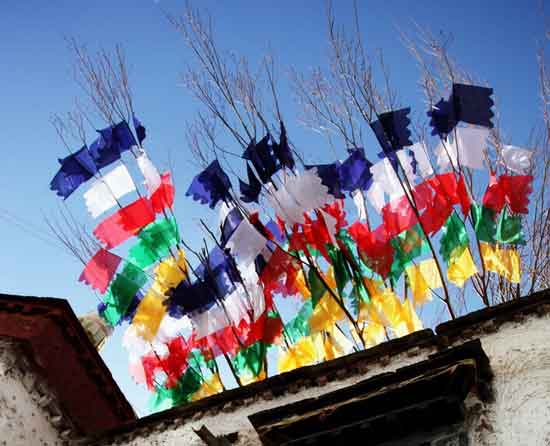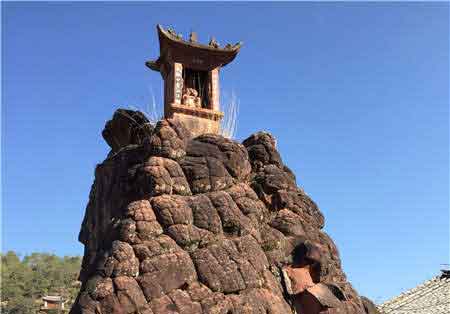Butter sculptures displayed at Kumbum Monastery
Kumbum Monastery in Qinghai held an annual exhibition of butter sculptures on Feb. 22, the 15th day of the first month of Tibetan calendar, drawing around 200,000 tourists and Buddhist followers from around the world, Xinhua reported.
The Kumbum Monastery, located in Huangzhong County, Qinghai Province was built in 1379 at the birthplace of Tsongkhapa, the founder of the Gelug sect of Tibetan Buddhism. it is one of the six major Gelug monasteries in China's Tibetan-inhabited areas. The butter sculptures, murals, and barbola(embroidered Thangka) of the monastery are called the “three unique arts”. Butter sculptures were created by Tsongkhapa, and the Butter Lamp Festival began during the reign of the Ming Dynasty with a history of more than 600 years. Today, the Kumbum Monastery’s butter sculpture display is the largest and the most influential in the Tibetan-inhabited areas.
Starting from every September, the monastery’s monks go to nearby yak herders to purchase low-fat yak butter, the raw material for making butter sculptures. The monastery begins to make butter sculptures in October and finish in two months. Butter sculptures include statues, figurines, birds and animals, as well as flowers and vegetation, which are composed into stories to convey Buddhist doctrines to followers. Thanks to their bright colors, unique crafts and exquisite modelling, butter sculptures were included in the first batch of national intangible cultural heritage list in 2006.
On Jan. 14 of this year, Kumbum Monastery’s “three unique arts” were exhibited in Paris, France, and received a warm reception from overseas Chinese in France and French people who were interested in Chinese culture.
Your Comment
Name E-mailRelated News
-
;
-
-

-
Sutra streamer: Symbol of Tibetan culture
The sutra streamer, a flag made of cloth, silk or handmade paper with Buddhist scriptures on it is believed to bond human and God in Tibetan culture.
-
-
-

-
A slice of ancient folk culture
It is only accessible after an hour's drive up a tortuous mountain road, but is the best preserved market town along the Tea-Horse Road.
-
Based in Lhasa, Tibet Vista is a Tibet travel agency that specialized in Tibet permit, and Tibet tours for both private and group travelers at a local price!
•4 Days Lhasa City Group Tour from USD 460 •8 Days Everest Base Camp Group Tour from USD 850 •15 Days Mt.Kailash Group Tour from USD 1780 •2016 Tibet Train Tours from Beijing, Shanghai, Chengdu, Xining,etc










